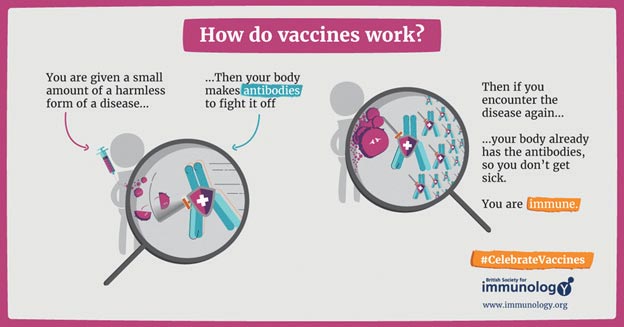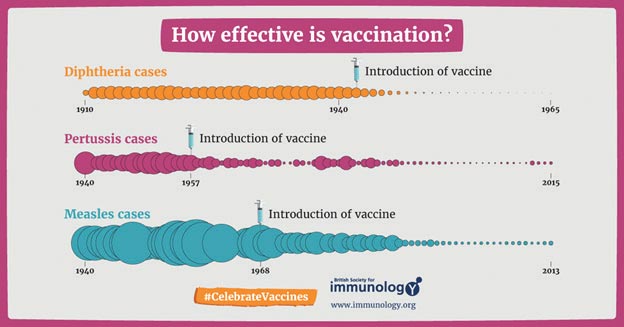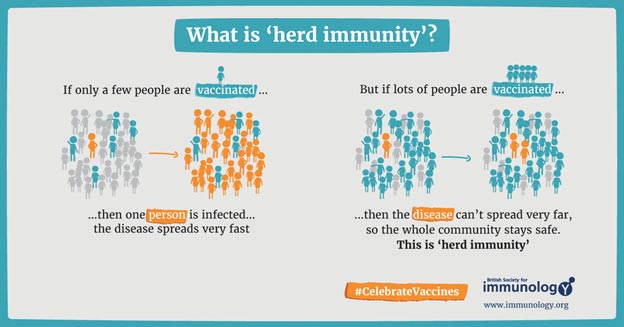Facing challenges repeatedly, you grow stronger and eventually overcome them. If you know your enemy and train for battle, you are on the path to success. We see this in sports, we’ve heard in schools and houses of worship, and we encounter it at the doctor’s office. It’s the concept behind “practice makes perfect,” and we inherently know it to be true. Immunization is based on this principle as well. A strengthened immune system is able to overcome the germs that could otherwise cause severe disease.
A vaccine is made from a small part of a virus or bacteria or a weakened version of it, treated in special ways so that it cannot cause illness, mixed with stabilizers, and given as shot into the muscle. For example, the Haemophilus influenzae b vaccine uses components from the outside capsule of the Haemophilus influenzae bacteria. The body learns to recognize this component as foreign, and then to fight against it. The body produces specialized cells that act as scouts, and when the Haemophilus bacteria is encountered after vaccination, the body quickly recognizes and fights it off without getting sick. Left unchecked, Haemophilus can infect the brain, lungs, epiglottis, blood, ears, joints, and heart. About 5% of children who get this infection will die; 15% of survivors may have lasting effects like cerebral palsy, seizures, blindness, and deafness.

Because vaccines stimulate the immune system, they may be followed by fever, swelling, rash, or pain where the shot was given. This means the vaccine is working as designed. Serious side effects are very rare and are monitored by the Center for Disease Control and Prevention. Vaccines do contain stabilizers and preservatives such as citric acid, aluminum, and formaldehyde. We ingest these chemicals on a daily basis in food, water, and medications in quantities much larger than what is in a vaccine. The amount of formaldehyde present in any vaccine is fifty times smaller than that found in a pear.

The beauty of vaccines is that the first encounter with a germ is in a controlled environment, where that foreign protein or weakened germ cannot cause disease. If someone encounters the germ without a vaccine, the number of organisms is significantly higher, and they are fully functional, therefore capable of causing disease and spreading to other people. In areas with high vaccination rates and no travel, the risk of getting an infection may be low, although the risk of serious illness from that infection remains high. However, in an area that sees a million tourists a year, the chances of catching a disease jumps exponentially. The risk of serious illness, lasting consequences, or death, are simply not worth the exceedingly low risk of serious effect from vaccines.
The biggest successes in improving length and quality of life over the last century have come from public health measures, particularly vaccines. As they say, an ounce of prevention is worth a pound of cure. That is why I happily get vaccinated, and encourage all of you do the same.
|